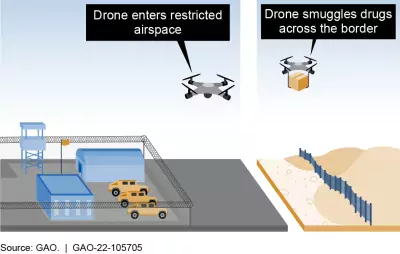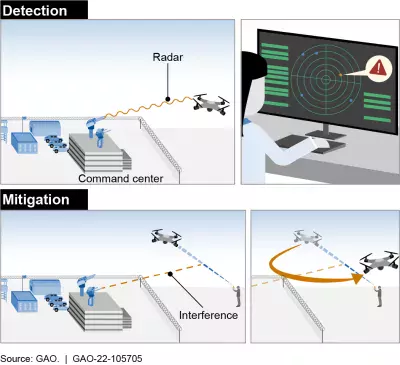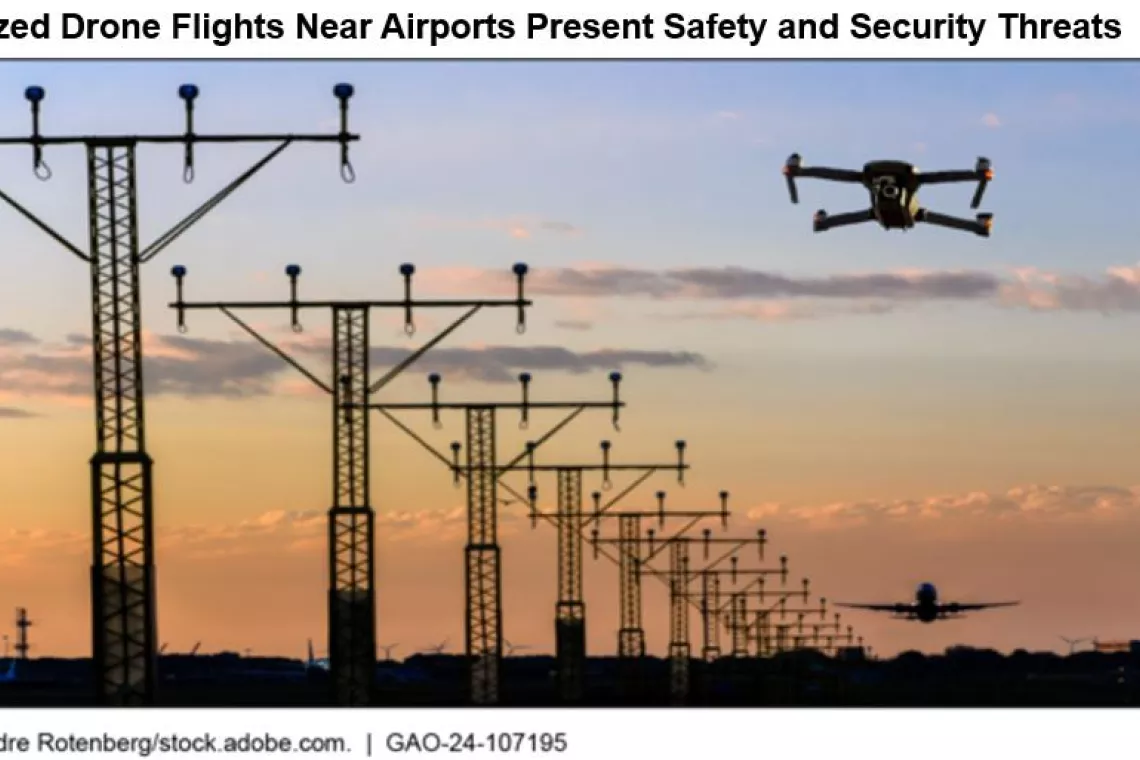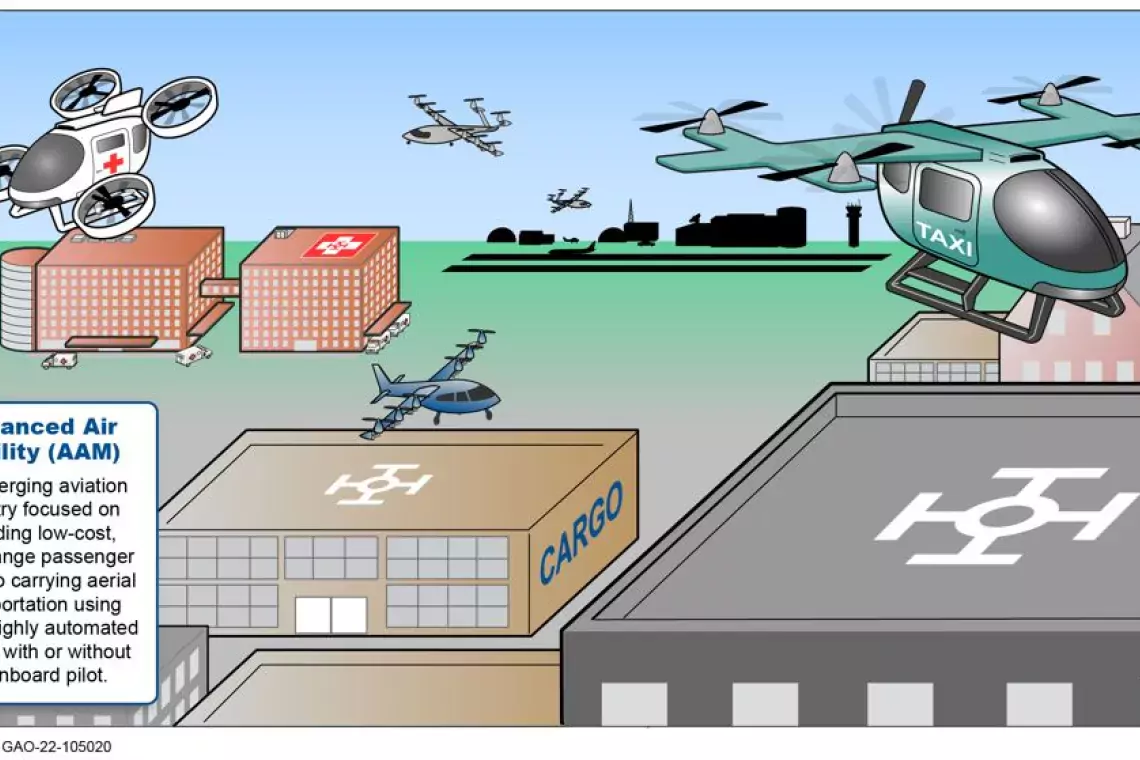Counter-Drone Technologies Could Enhance Safety and Security, but May Have Unintended Effects
Uncrewed aircraft systems (UAS), or “drones,” have a variety of important uses—from search and rescue to cinematography. But this technology can also cause problems. For example, in January 2019, a drone was spotted near Newark Liberty International Airport, halting all air traffic activity for over an hour.
Counter-drone technology can detect and—when needed—jam, capture, or disable unauthorized drones. Today’s WatchBlog post looks at our new Science & Tech Spotlight on counter-drone technologies.
Image

How does counter-drone technology work?
Counter-drone technologies generally fall into two categories: detection and mitigation.
Detection technologies include infrared devices to track heat signatures, radio frequency detection for signals from a drone’s remote controller, and acoustic methods to recognize the unique sounds of drone motors.
Mitigation technologies are those that can repel or intercept a drone. For example, interference signals can jam the communications between the drone and its operator. Other technologies can try to net the drone, shoot it down, or disable it using trained hawks.
Counter-Drone Technology Detects and Jams an Unauthorized Drone
Image

Who can use counter-drone technology?
Domestically, only four federal agencies have been authorized to deploy counter-drone technologies under certain circumstances. For example:
- The Department of Defense could use counter-drone technology to secure domestic military bases.
- The Department of Energy could use it to protect sensitive nuclear facilities.
- The Department of Justice could use it to secure prisons and prevent drones from smuggling contraband inside.
- The Department of Homeland Security could use it to protect large gatherings, like the Super Bowl.
What are the challenges facing counter-drone technology?
One of the main challenges to current counter-drone technology is that it’s not always effective. For example, detection systems may overlook a drone because of interference or mistake a bird for a drone. And mitigation systems may have a limited range or fail against quick or unpredictable drones.
Another challenge is unintended consequences. For example, counter-drone technology may collect personal information or interfere with nearby communications. Systems that disable drones can lead to damage from errant projectiles or falling drones. Therefore, counter drone technology is usually customized to meet a specific purpose and location.
A final challenge is that no other entities—apart from the four federal agencies listed above—are federally authorized to deploy this technology. Local agencies generally rely on a small number of federal counter-drone units to respond to drone threats in their area.
Key questions for policymakers
With over 2 million drones projected to be in use in the U.S. by 2024, the risks to critical sites and safety are likely to grow. This increase raises several questions for policymakers, including:
- What research and development could improve counter-drone solutions while minimizing unintended effects?
- What are the trade-offs for authorizing law enforcement and others to use counter-drone technology?
- What is the appropriate level of coordination and oversight?
Find out more about counter-drone technologies by checking out our new Science & Tech Spotlight.
- Comments on GAO’s WatchBlog? Contact blog@gao.gov.
GAO Contacts
Related Products

GAO's mission is to provide Congress with fact-based, nonpartisan information that can help improve federal government performance and ensure accountability for the benefit of the American people. GAO launched its WatchBlog in January, 2014, as part of its continuing effort to reach its audiences—Congress and the American people—where they are currently looking for information.
The blog format allows GAO to provide a little more context about its work than it can offer on its other social media platforms. Posts will tie GAO work to current events and the news; show how GAO’s work is affecting agencies or legislation; highlight reports, testimonies, and issue areas where GAO does work; and provide information about GAO itself, among other things.
Please send any feedback on GAO's WatchBlog to blog@gao.gov.




